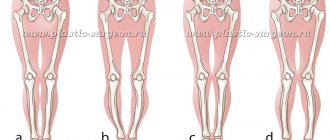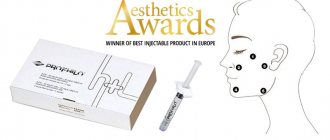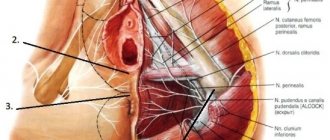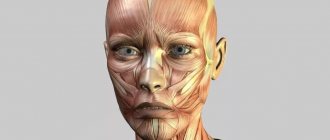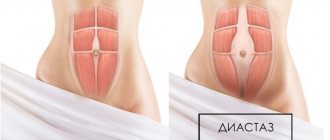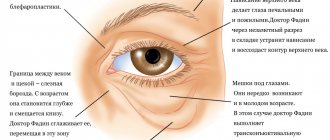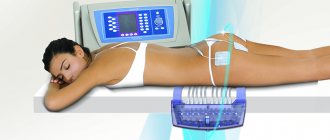According to statistics, every fifth man, when meeting a woman for the first time, appreciates the beauty and shape of her legs. While on the beach, representatives of the stronger sex are able to lose the power of speech and the thread of conversation if the owner of slender legs passes by. That is why the main male attention in companies is paid to women in short skirts. Also, statisticians claim that 20% of women are dissatisfied with their legs: some consider them too full, thin or dissatisfied with their shape. Moreover, in the first and second cases, the fair sex does not see a big problem, they are simply embarrassed to wear a mini. But crooked legs are perceived as a real tragedy! While beauties on the beach show off their slender legs, some women prefer to hide theirs under long skirts and wide trousers, and are tormented by the question - how to correct the shape of their legs, make them ideal?
Everyone understands that it is impossible to change your shape through physical training. Therefore, some women, especially with obvious and not far-fetched curvature of the legs, resort to the help of a plastic surgeon. Fortunately, modern medicine provides the opportunity to correct this deficiency.
Selection of implants
Implants for cruroplasty vary in shape, filler, surface structure and manufacturer. The shape of implants for cruroplasty can be anatomical or round:
- symmetrical - products with a maximum profile (thickness) in the middle;
- anatomical or asymmetrical - the implant follows the shape of the calf muscle and has a thickened upper edge.
The length and thickness of implants for cruroplasty for the shin are selected individually in each specific case in consultation with a plastic surgeon. If the calf implant is too large, it may result in contouring when the legs move.
Operations for transverse flatfoot
For this pathology, doctors perform surgical interventions on the forefoot
. Most often they perform an osteotomy (Chevron or Scarf) of the first metatarsal bone. If necessary, they supplement it with plastic surgery of muscles, ligaments, and tendons. This operation allows you to correct not only transverse but also valgus deformity of the foot.
Chevron.
Quite often, doctors discover exostoses (bone growths) and hammertoe deformity of the II-V fingers in patients. The former are removed using the Schede method, the latter are corrected using resection or osteotomy. Thus, patients with transverse flatfoot can undergo several surgical interventions simultaneously. This approach allows you to qualitatively correct existing defects.
Preparation for cruroplasty surgery
The preparatory period for surgery includes a full examination to exclude possible contraindications. During the preparatory period, the following recommendations should be followed:
- stop taking medications that may help reduce blood clotting (antipyretics, vitamins C, E...);
- Avoid smoking and drinking alcohol (nicotine and alcohol thin the blood, which can cause postoperative bleeding);
- go on a low-salt diet (lack of salt prevents swelling after the procedure);
- stop taking sedatives and hypnotics on the day of the intervention;
- three days before cruroplasty you need to stop going to the gym;
- do a Doppler ultrasound of the blood vessels of the legs;
- Have your passport, insurance policy, test results and examinations in your hands.
Surgical treatment of hallux valgus: indications
It is possible to correct the position of the thumb using conservative methods in childhood, when the bone skeleton is still developing. In all other cases, only surgery will help. The main indications are:
- discomfort when walking due to unbearable pain;
- deviation of the joint by several tens of degrees;
- a significantly protruding bone, making it impossible to wear shoes;
- violation of the position of the foot, making it difficult to move;
- swelling of the thumb;
- inflammatory manifestations and other complications of hallux valgus.
The doctor determines the indications individually for each patient. Typically, surgical methods are used when conservative methods (conventional methods, without surgery) become ineffective.
Leg plastic surgery technique
During cruroplasty, epidural anesthesia or anesthesia is used. At the request of the patient or if there are medical indications, general anesthesia can be used. The cruroplasty operation lasts from 30 minutes to an hour and a half; the implants are inserted through an incision made in a fold of skin. This helps ensure that the scar subsequently becomes invisible. After the installation of the prostheses is completed, the correctness of the operation is checked. Having placed the implant in the optimal position, the wound is sutured.
Surgical methods of treatment
Globally, all operations to remove hallux valgus are divided into minimally invasive and open. Minimally invasive ones are performed through small incisions in the skin. In most cases, there is no need for stitches. Recovery is quick and easy.
There are three categories of open surgical interventions:
Manipulation of soft tissues.
An example is the McBride operation. The muscles and ligaments of the foot are cut. Bones are not affected. The intervention is effective for minor deformities and can be performed in case of contraindications from the osteoarticular system.
Osteotomy.
An artificial fracture of the metatarsal bone is performed. The doctor selects the location of the fracture. Due to this, the position of the metatarsus is corrected
Arthrodesis.
The operation is used in advanced stages of hallux valgus deformity, when it is necessary to return the physiological shape of the joint.
The doctor, from all the methods of surgical intervention available to him, selects the one that best solves the problems of a particular patient.
The operation requires preliminary preparation. We need to get some test results. These include clinical and biochemical blood and urine tests, a blood test with a detailed coagulogram, and tests for blood-borne infections. Electrocardiography is prescribed, and x-rays of the foot are performed (necessarily in two projections).
If no contraindications to surgery to remove hallux valgus are identified, the method of anesthesia is agreed upon. Most often, local anesthesia is sufficient.
Postoperative period after cruroplasty
On average, recovery will take 1.5-2 months. After cruroplasty, patients remain in the hospital for one day, then are sent home. You can fully return to your normal lifestyle in a month.
The initial postoperative period after cruroplasty may be accompanied by slight swelling and uncomfortable pain (comparable to the sensation of a muscle strain). In case of severe pain, painkillers may be prescribed. The sutures are removed approximately 7-10 days.
To reduce edema syndrome and alleviate postoperative syndrome it is necessary:
- It is recommended to wear special compression garments for 1.5-2 months;
- for 8 weeks it is necessary to limit physical activity, exclude sports and visiting the sauna;
- women are prohibited from wearing high-heeled shoes for 2-4 weeks;
- on the doctor’s recommendation, short walks to train your legs;
- dressings and examinations 1-2 times a week.
How to correct bowed legs
Depending on the type and degree of curvature, various types of correction can be used - from special exercises to surgical intervention (cruroplasty, orthopedic surgery).
Types of curvature
Aesthetically harmonious legs are considered to be legs that, in a shifted and straightened position, have contact at four points - the middle of the thigh, knees, middle of the shin, heels. Non-compliance with the accepted norm indicates curvature of the legs.
Types of curvature:
- O-shaped - varus curvature, when the knees and shins do not touch each other, an oval gap appears between them.
- X-shaped – valgus curvature, strong divergence in the area of the shin and heels, when the knees touch.
Distortions can be false or true. False is an incorrect distribution of soft tissues. True - anatomical defects caused by bone deformation.
Correction methods
The correction method is selected individually.
It can be:
- Special exercises and gymnastics.
- Lipofilling is an operation to transplant your own adipose tissue into problem areas of the legs. Allows you to correct skin defects (recessions and unevenness), removes minor deformations, and improves the silhouette of the legs.
- Cruroplasty is a plastic surgery that corrects the size and shape of the lower leg using implants. The implants have a very durable oblong-shaped shell, which is filled with silicone gel.
- Orthopedic operations.
Leg exercises
With false curvature, good results can be achieved by performing special exercises. Building muscle mass in problem areas will improve the silhouette of the legs and make them aesthetically attractive. This can be achieved by performing exercises that challenge and engage the muscles in problem areas.
For O-shaped curvature, exercises such as:
- Straightening your legs when rising onto your toes.
- Walking up the stairs, rising on tiptoes.
- Raising straight legs.
- You can walk using the inside of your foot.
- Walk with your heels pointed forward and toes apart so that they look outward.
- Squat with your toes spread out as far as possible.
- Leg raise while lying on your side.
- In a sitting position, leaning behind with your hands, alternately raise your straightened legs.
- Lying on the floor, raise your legs up, crossing them, and slowly lower them to the floor.
- Tighten your legs with belts or special correctors, lie down on a hard surface, stretch out and pull your feet towards you. You can also, without lifting your head and body from the floor, raise and lower your legs with smooth movements.
- Sit on twine. Stretching exercises.
- Standing straight, squeeze your legs as tightly as possible. The tension must be very strong. Freeze in this position for 5-7 seconds.
- Place your feet shoulder-width apart and do 20 squats, keeping your knees together.
- Sitting with your legs stretched out, tensing your muscles, quickly turn your feet outward (do 20 times).
- Get on your knees, try to sit on your heels, pointing your toes in different directions. The exercise is performed on a hard surface, 20 approaches.
It is recommended to give your legs general physical activity, start running, swimming, figure skating, classical dancing, and skating.
For X-shaped curvature, other exercises are suitable. Need to:
- Walk using the outer part of your foot.
- Exercise on exercise machines with a load on your feet.
- Do squats with crossed legs, pressing on your knees.
- Do jumping rope.
- Squat with a ball clamped between your knees.
- Spread your legs as far apart as possible, feet together, back straight. We fix the position for 5 seconds.
- While sitting, place a shovel handle or similar stick on your knees. We press hard, lifting our shins onto our toes. We lower it. Over time, you can make the stick heavier.
These workouts will be most effective if you follow a number of simple rules:
- Do not stand on one leg or cross your legs.
- Limit wearing high heels.
- Sleep only on your back.
- You cannot distribute all your weight on one leg.
- Do not carry a bag on one shoulder.
Special professional simulators have also been created for use at home. Exercises with them are very simple, but productive. An excellent result can be obtained by doing 10 ordinary squats every day, 3 times.
It is also necessary to remove excess fat deposits. You need to walk more, ride a bicycle, rollerblade, scooter, and perform as many simple active movements as possible.
Surgical methods for correcting curvature of the legs
Only surgical operations can remove true curvature.
Such as:
- osteosynthesis;
- cruroplasty;
- lipofilling.
In the most difficult and complex cases of leg curvature, osteosynthesis is used - an operation using the Ilizarov apparatus. This method helps to get rid of curvature of the legs of virtually any complexity. Deformed bones are dissected and then fixed using a device. This device is worn until the bones heal completely, for 1-3 months, and sometimes longer.
Cruroplasty corrects the shape of the shin best.
This is an operation during which silicone inserts are installed in problem areas. The operation lasts 1.5-2 hours. An incision is made under the knee and the implant is inserted there. The stitches are removed after a week. The rehabilitation period is 1.5-2 months.
Lipofilling is a plastic surgery, the least traumatic method of correction, which does not require making incisions and does not require stitches.
It helps not only correct the shape of your legs, but also removes excess fat. Using punctures, your own fat tissue is transplanted to places where there is a lack of volume. The duration of the operation is about 2 hours. Rehabilitation – 1-2 months. Author: K.M.N., Academician of the Russian Academy of Medical Sciences M.A. Bobyr

